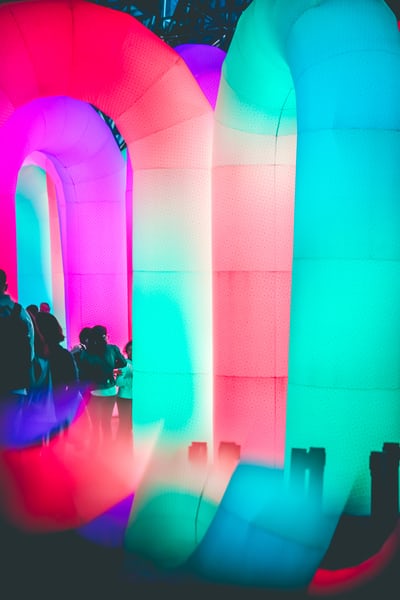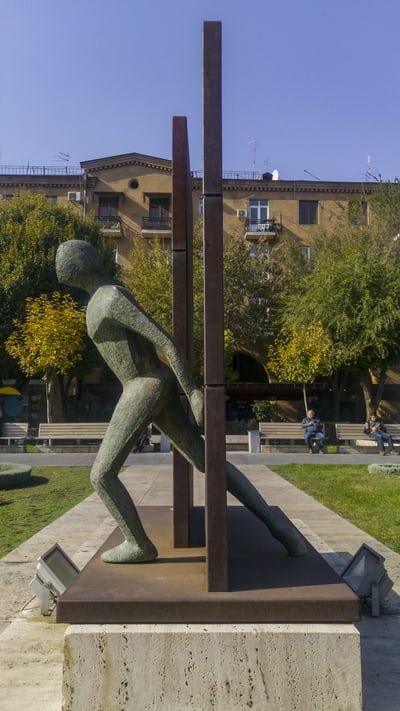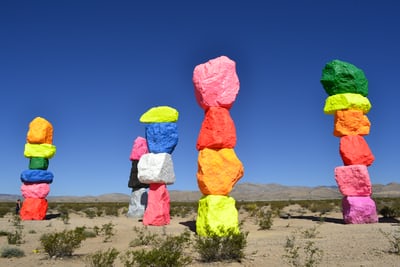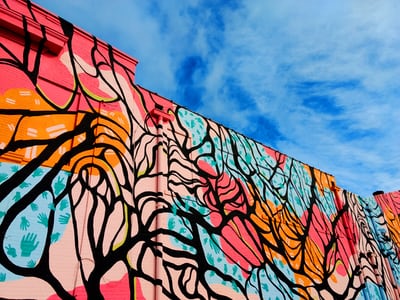Insights
Explaining Public Space and Public Art

Public art is created for the purpose of public consumption and therefore it is essential that this art be made easily accessible to its intended audience. The intended audience for public art may be extremely wide reaching or tailored to a particular demographic, but in either scenario the location of the art within a public space will help to appreciate and contextualise the installation.
Public art can massively impact the potential of their respective locations, especially within urban settings with maximum potential for interaction with the public. Art can serve to memorialise or celebrate a location of historic significance or commemorate a historic event. It can also be used during celebration events such as festivals, to highlight public spaces and bring the public together. It can improve urban landscapes on a long-term basis by beautifying the physical environment, and as a vehicle for improved infrastructure, such as new buildings or energy efficient solutions. All of these innovations can remarkably improve the liveability of urban environments and help to create a sense of collective pride and identity within city spaces.
Art does not only add value to public spaces in a purely visual sense, but also can have knock-on effects by promoting a higher level of interaction between designers, the spaces they create and the general population. Public art brings together a range of creative disciplines from lighting designers to architects and city planners, as well as technicians of all trades and local councils and governing bodies.

PUBLIC ART OR ART IN PUBLIC?
Any art installation can be situated within a public space, but not all art within public spaces are classed as “public art”. To be considered public art the installation must have a relationship to its surroundings. This relationship and the intended effect and message conveyed to the viewer are integral to the creation of effective public art.
SITE, CONTEXT, AND COMMUNITY
Site specific artwork implies artwork where the installation itself and its location are of equal significance, with one informing and influencing the other. Without the location as setting, the artwork would be rendered ineffective, or at the very least greatly detract from its intended meaning.
The site may have great significance not just as the physical location of the installation but in grounding the artwork within a much wider context such as community, or historically or culturally speaking, The general location of the artwork may serve to imbue meaning into the artworks desired meaning, including broad social issues such as disability, social justice, inequality, environmental preservation etc.

THE PUBLIC SPHERE AND MULTICULTURALISM
Whichever way we choose to define public art, access to the installation and interaction with the general population are paramount. In an ideal world artwork should be available to all who wish to access it, without economic or social barriers. Certain artworks may choose to highlight the experience and identity of particular cultural identities, but it is essential that all cultures feel as though their right to interact and appreciate public artwork without restrictions, that the rights of all cultures are respected within these environments and the voices of individuals are heard.

PLACEMAKING
In decades past urban design and architecture could be more so consumed by prioritising function rather than considering form, and as such created purely utilitarian public spaces devoid of visual interest. With so many urban centres left bereft of any interesting visual elements, city dwellers often seek respite away from the city centre. In utilising artworks and visual design to rejuvenate and enrich the visual appearance of public spaces, public art gains “placemaking agency” as detailed by Ronald Lee Fleming and Renata von Tscharner, in Place Makers: Creating Public Art That Tells You Where You Are. Tscharner and Fleming conducted extensive research on public artworks within the USA measuring the positive impact of public art on the ability to revive and re-establish the unique character of urban spades and improve communities.
Lastly, a quick shout out to the team at neue who are experts are activating public spaces and creating public art projects. If you’d like to see your neighborhood become extraordinary with new community activations please get in touch.
